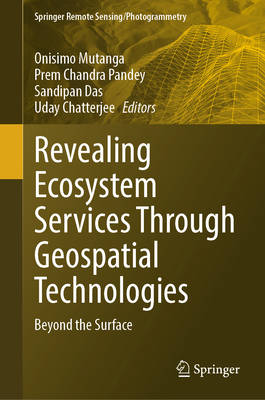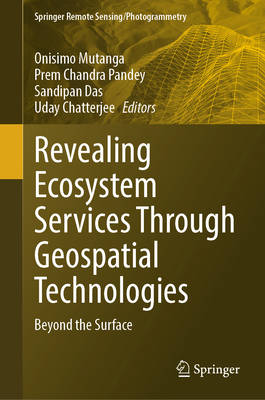
- Retrait en 2 heures
- Assortiment impressionnant
- Paiement sécurisé
- Toujours un magasin près de chez vous
- Retrait gratuit dans votre magasin Club
- 7.000.0000 titres dans notre catalogue
- Payer en toute sécurité
- Toujours un magasin près de chez vous
Revealing Ecosystem Services Through Geospatial Technologies
Beyond the Surface
Description
This book covers the quantification of forests, grasslands, and woodlands ecosystem services from the supply side (e.g., regulatory and provisioning services) to the demand side, including human cultural needs. The Millennium Ecosystem Assessment (MA, 2005) defines ecosystem services as simply the benefits that are derived from ecosystems for human well-being (Board 2005). The report has documented that ecosystems have contributed more than 50% of the world's GDP. However, as a result of climate change and anthropogenic impacts, about 60% of the world's ecosystem services have been degraded. This significant reduction of services has serious consequences on food production, climate regulation, and net primary production, among other services which directly affect human well-being. In order to appreciate the benefits of various ecosystems to humanity and monitor their degradation, a systematic quantification of ecosystem services and their change in both time and space is critical. In particular, there is a need to characterize the ecological infrastructures, processes, and ecosystem functions that underpin the ecosystem services in ways that can be evaluated and tracked (Potschin and Haines-Young 2016). In addition, various intervention measures to restore degraded ecosystems require constant and accurate measurement of the ecosystem characteristics in order to assess the benefits of ecological restoration.
Vegetation in particular provides a number of provisioning (forage production, food), regulatory (climate, temperature), supporting (primary production, nutrient cycling), and cultural (educational, recreation) ecosystem services as well as biodiversity maintenance (Masenyama et al. 2022). Remote sensing data contributes significantly to mapping, modeling, and quantitative valuation of the ecosystem services in a spatially explicit manner. It provides an opportunity to use standard protocols at various spatial scales as well as wall-to-wall mapping of phenomena through time, which is critical for monitoring on a continuous basis.
Spécifications
Parties prenantes
- Editeur:
Contenu
- Nombre de pages :
- 394
- Langue:
- Anglais
- Collection :
Caractéristiques
- EAN:
- 9783031980473
- Date de parution :
- 31-08-25
- Format:
- Livre relié
- Format numérique:
- Genaaid
- Dimensions :
- 156 mm x 234 mm
- Poids :
- 766 g

Seulement chez Librairie Club
Les avis
Nous publions uniquement les avis qui respectent les conditions requises. Consultez nos conditions pour les avis.





